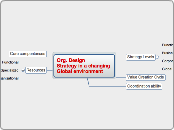Biomes
Tundra
Climate Change is the biggest ecological threat
Nickel, Copper, Coal, Gold, Uranium, Tungsten, Diamond, Oil, and Iron.
Due to the extreme temperatures there would be a less likely amount of human population and it would be similar to the desert biome.
Precipitation, Temperature, Permafrost, Wind
Low Shrubs, Crustose and Foliose Lichens, Herbivores, Carnivores, Migratory Birds, Insects, Fish
Top of the world, near the north pole.
Savanna
Climate change, specific farming practices, overgrazing, aggressive agriculture irrigation, deforestation and erosion.
Natural Rescources
A lot of metal resources including Bauxite, Copper, Lead, Zinc, Silver, Nickel, Tin, Gold etc.
Subtopic
The Savanna is more likely to be inhabited by humans however still not super likely as the boreal forest.
Climate, Soil, Topography, Precipitation, Hills, Prairies, Rocks, Cliffs, Gullies
Trees, Grasses, Shrubs, Mosses, Lichens, Insects, Fungi, Larger Animals
Africa, South America, Australia, and India.
Chaparral / Mediterranean
Wild fires and human development, habitat destruction, air pollution, water pollution, climate change and global warming.
Trees, animals(fur),rocks
Very Populated by humans
Mountains, Rocks and Water (small amount)
Foxes, Ferns, Trees, Ticks, Broom rapes, Pumas, Coyotes and Rabbits
US West Coast, South America's West Coast, South Africa's Cape Town, Australia's Western Tip, Coast of the Mediterranean.
Temperate Deciduous Forest
Acid rain caused by industrial and vehicular emissions.
Trees, Flora, Fauna, and Ecosystems.
Populated by many humans if not #1 in the biomes
Rocks, Soil, Water, Sunlight, Air, Climate, Rain, Hills, Temperature, Air
Deciduous Trees, Birch Trees, Oak Trees, Red tailed hawk, common lime, coyote, chipmunks, white-tailed deer.
Locaction
Half of the United States, Canada, Europe, parts of Russia, China, and Japan.
Desert
Global Warming because it creates in increase of wildfires as well as a drought.
Mineral Salts, Copper, Uranium, Iron
Less than most of the biomes.
Sand
Scorpions, Coyotes, Snakes, Spiders, Lizard and Cacti
North Africa, Southwestern U.S, Mexico and Australia.
Grassland
Global Warming, Urban Development, Pesticides
Temperate Grassland - Wheat, Coal, Oil, Corn, Livestock, Gas and Oats
Tropical Grassland - Water, Lumber, and Livestock.
Similar to desert so there would be less human population
Climate, Parental material and soil, Topography, Natural Disturbances.
Primary and Secondary Consumers (Rabbits, Moles, Small Deer etc.)
Primary Producers ( cyanobacteria, mosses, lichens, trees etc)
Africa, South America, Eurasia and plains of North America
Boreal / Taiga Forest
Logging, Mining, Oil and Gas, Hydro.
Wood, Oil
Since Canada and Russia are well populated areas it is assumed that there will be a higher population than most of the others.
Rivers, Lakes, Mountains, Rocks, and Precipitation
Mammals, Insects (32,000 species), trees,
Canada and Russia
Rainforest
Ecological Threats
Logging, Deforestation, Cattle Grazing, Soya Plantations, Palm Oil, Mining,
Natural Resources
Farming, Mining, Ranching and Timber
Human Population
Due to the intense humidity it would not be super likely for a lot of humans to live in the rain forest biomes.
Characteristics
Abiotic Features
Soil Nutrients, Sunlight, and a Warm Climate
Biotic Features
Plants, Bamboo, Coconut Trees, Curare Plant, Animals ( Colobus Monkey, Sloth, and Lemurs)
Location
Central and South America, Southeast Asia, Africa, and Australia









